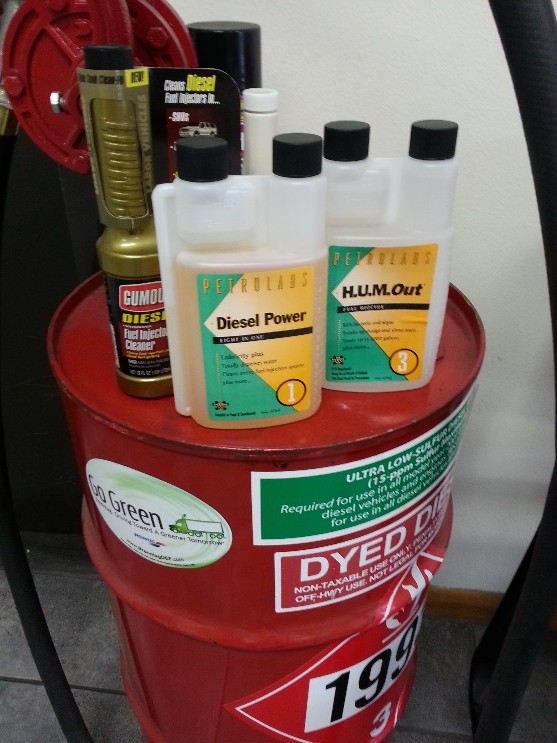Know the difference in On Road & Dyed Fuel
All on road diesel (the stuff you buy at the gas pump) is ULSD (ultra low sulfur diesel) starting in 2010 by EPA mandate. That means it has less than 15 ppm sulfur in it, so that new tailpipe emission control devices in trucks (requiredstarting in 2007) could work without being sulfur poisoned. To get the sulfur that low, the fuel has to and the injectors. Most ULSD batches needed “lubricity additives” to bring the fuel’s slipperiness up to the level that the fuel won’t potentially allow damage to the pump or injectors. ALL ULSD sold commercially be hydrotreated harder than it was before during the refining process. Turns out the sulfur molecules we’re taking out actually provide “lubricity” to the fuel (think, slippery) which protects the fuel pumps by major vendors will have been tested and, if necessary, lubricity additized. All on-road vehicles built in 2006 and later should run quite happily on this fuel. Starting in 2010, most off road diesel were required to drop to 15 ppm (ULSD) as well. Red dyed off road fuel does not define sulfur content, as I noted above. It can be anything from 0 to 500 ppm sulfur today, and in some places (if people are blending home heating oil to off road) it can be even higher. The red dye has no function other than to prove to the feds that road taxesHAVE NOT been paid on it. So if you get caught with red fuel in your on road vehicle the feds will have an issue with you. And remember that red dye does not imply anything about fuel sulfur or lubricity.
The federal government requires dyeing of untaxed diesel fuel and kerosene for two reasons:
- To help reduce tax evasion by identifying fuel on which excise taxes have not been paid, and
- To help reduce air pollution by identifying fuel not suitable for use in highway vehicles.
The law provides that any visible evidence of dye may result in a penalty. The introduction of fuel additives containing any dye puts truckers and trucking companies at risk for the penalty.
Never allow unattended fueling of your vehicle. Watch the fueling operation and look at the fuel if sight glasses are available on the fueling hose. Consider carrying a clean, clear plastic container or tube so you can observe a sample of the fuel if you have any doubts.
The Internal Revenue Code provides that any person who refuses to allow an inspection will be fined $1,000 for each refusal. The vehicle may then be detained until an inspection is done.
$$$$$$$$$$$$$$$$$$$$$$$$$$$$$$$$$$$
Generally speaking, no dyed fuel may be used in highway vehicles. For each violation, the Internal Revenue Code specifies a penalty of $1,000 or $10 per gallon, whichever is greater, plus payment of the tax. States may impose additional fines.
In Summary
Modern fuels are of extremely high quality and are additized as appropriate if purchased from a reputable supplier like Lynch Oil Company. On road diesel will be more expensive because an average of 42 cents per gallon taxes have been paid to the government on them. On low sulfur fuels, lubricity is always a concern – modern engines are designed for these fuels, so they should not be a problem. Older engines (for ex 1997 Ford 3930 tractor which is designed for 0.05% sulfur fuel) may or may not be tolerant of the lower lubricity levels in ULSD; even older engines (or a 1970 Ford 3000 tractor which is designed for 0.5%+ sulfur fuels) almost certainly will not tolerate ULSD for high severity duty.
I try to additize every other tank full (Petro lab diesel power) of fuel on my 2012 Chevy Duramax and you can purchase it at Lynch Oil Company. Further advice – keep your fuel dry and clean, I’ve had a 2006 Superduty 6L with 208k miles on the original injectors (which is unheard of) and I attribute it to using Shell Rotella and fuel treatments.




You must be logged in to leave a reply.